CloudCompare Update List Message
From:
"CloudCompare Update List" <cloudcompare@PROTECTED>
Date:
January 13th 2019
Dear CloudCompare
enthusiasts,
A new version has been released. You'll find it here:
The 2.10 Zephyrus version is finally ready!
(for those who wonder who/what is Zephyrus)
Once again, many new things in this release. We also tried to improve the existing tools and made a lot of cleanup behind the scenes.
It took us some time to achieve this new release due to an increased workload for all of us. Luckily we have also new contributors!
(as always, make sure your graphic card drivers are not too old: since version 2.7, old Intel or ATI graphic cards are not supported anymore)
Your support is really appreciated!
We just want to remind to our users that CloudCompare is not "free". It's true that downloading and using CloudCompare can be done freely and free of charge... but developping and maintaining it is certainly not free! Open source projects can't live without active support from the community.
Here are the new features:
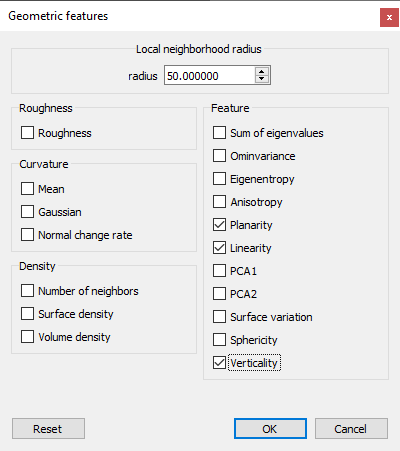
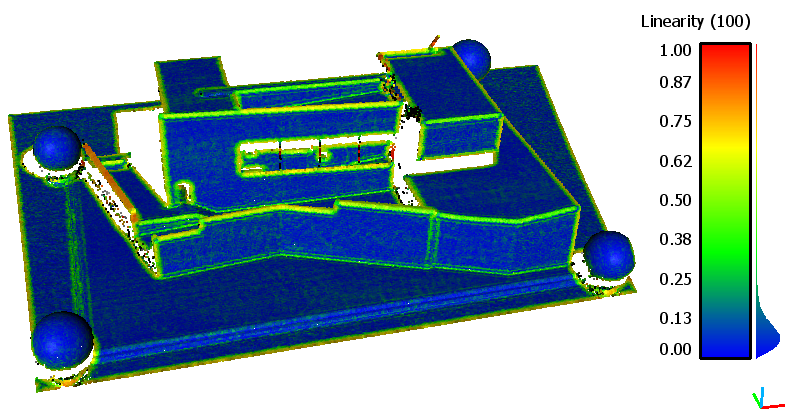
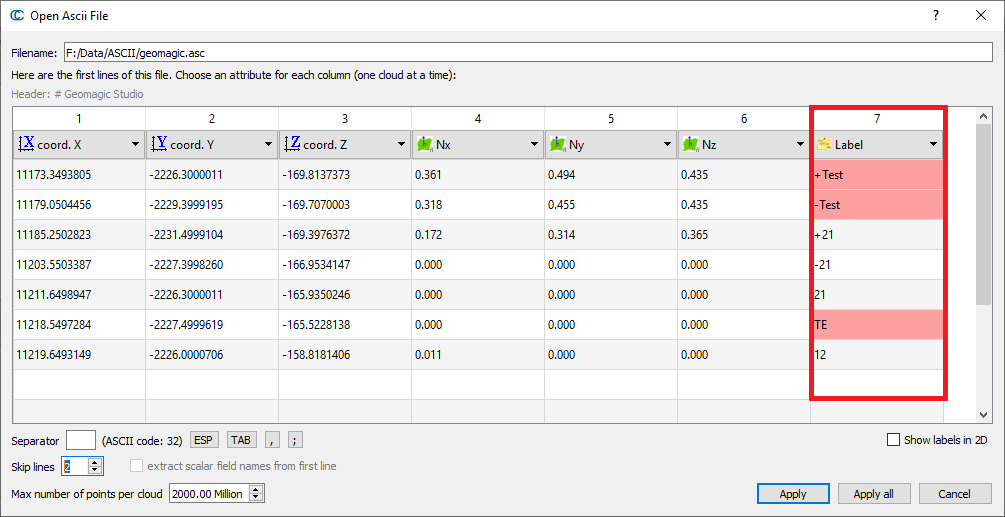
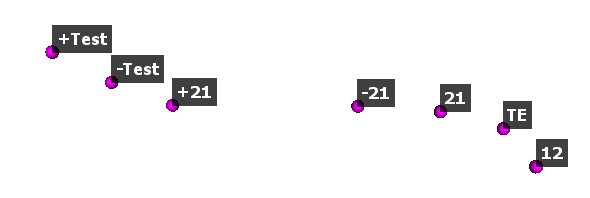
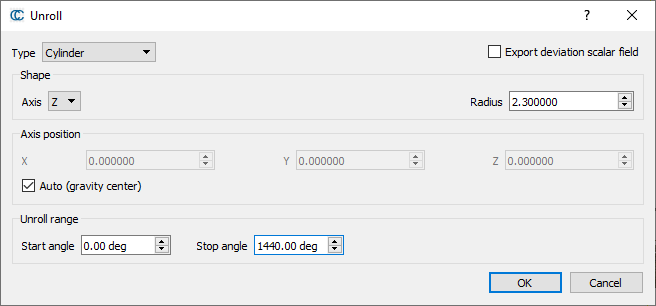
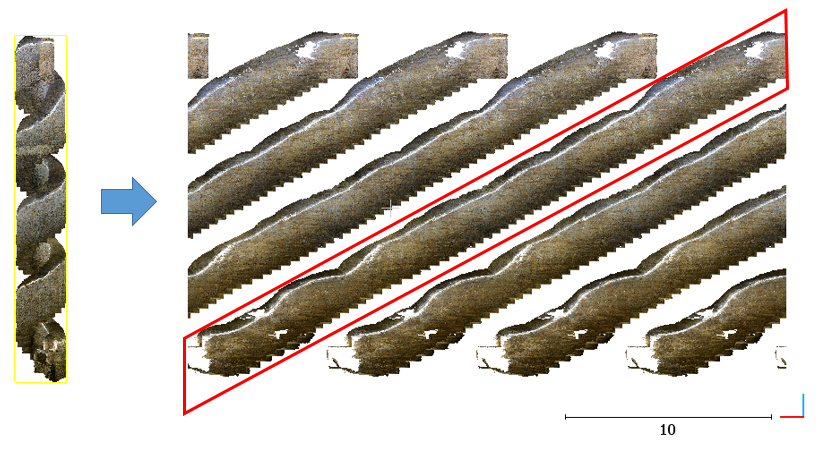
(data of the "Palatine staircase" kindly provided by Nathalie André, IRAA / CNRS)
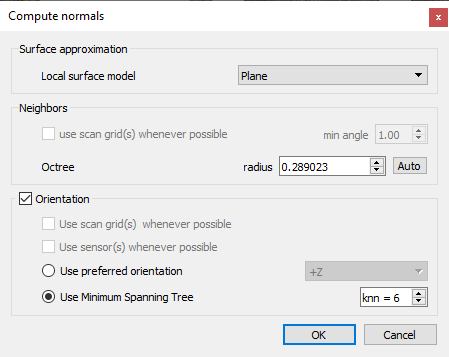
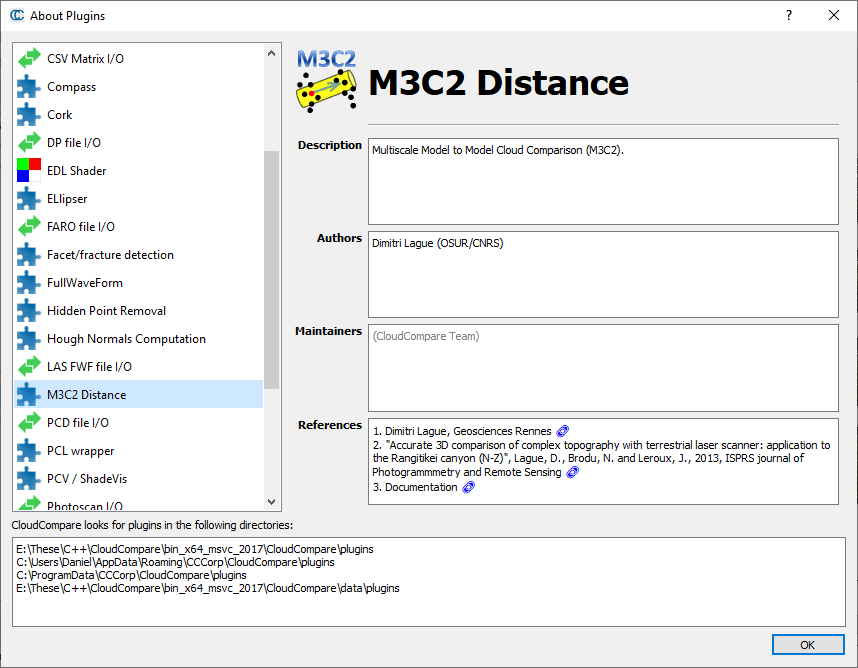
And last but not least, here are the bug fixes:
Enjoy,
CloudCompare Admin
PS: if you can't read properly this message, you can read it here: http://www.cloudcompare.org/release/notes/20190106/index.html
A new version has been released. You'll find it here:
|
|
|
|||||||
 Windows 64 bits Windows 64 bits |
 |
 |
 |
||||||
 Windows 64 bits Stereo (support for NVidia 3D Vision and Oculus Rift) Windows 64 bits Stereo (support for NVidia 3D Vision and Oculus Rift) |
 |
 |
 |
||||||
 Mac OS 64 bits Mac OS 64 bits |
Thanks
to Andy Maloney, MacOS apps are available here |
||||||||
 Linux 64 bits Linux 64 bits |
Now
thanks to Alberto
Mardegan (and Romain Janvier), there is a "universal" snap package
for Linux. On Ubuntu, starting from version 16.04 it's as simple as typing "snap install cloudcompare". On other distributions, you may need to install snap first (please refer to the corresponding documentation if necessary). Snaps are published in 3 channels: "stable", "beta", and "edge". The "stable" and the "beta" channel deliver the latest stable and beta versions of CloudCompare while "edge" delivers nightly builds and may eat your laundry. You can switch at any time between these three channels by launching "sudo snap refresh --<channel name>" in your terminal. |
||||||||
 Sources Sources |
git
repository: https://github.com/cloudcompar/cloudcompare (for compilation instructions, refer to the BUILD.md file) |
||||||||
Your support
is greatly appreciated. Many thanks to all our supporters who made
donations
The 2.10 Zephyrus version is finally ready!
(for those who wonder who/what is Zephyrus)
Once again, many new things in this release. We also tried to improve the existing tools and made a lot of cleanup behind the scenes.
It took us some time to achieve this new release due to an increased workload for all of us. Luckily we have also new contributors!
(as always, make sure your graphic card drivers are not too old: since version 2.7, old Intel or ATI graphic cards are not supported anymore)
Your support is really appreciated!
We just want to remind to our users that CloudCompare is not "free". It's true that downloading and using CloudCompare can be done freely and free of charge... but developping and maintaining it is certainly not free! Open source projects can't live without active support from the community.
Here are the new features:
- Edit > Polyline > Sample points
- simple tool to regularly samples points on one or several polylines (just as what can be done on Meshes with the 'Edit > Mesh > Sample points' tool)
- Tools > Other > Compute geometric features
- New set of geometrical features to compute on clouds:
- sum of eigen values
- omnivariance
- eigenentropy
- anisotropy
- planarity
- linearity
- PCA1
- PCA2
- surface variation
- sphericity
- verticality
- Features are all based on the eigen values of the covariance matrix computed on a neighborhood around each point (just as PCA). Most of them are defined in "Contour detection in unstructured 3D point clouds", Hackel et al, 2016
- Features can be computed in batch thanks to the tool dialog
- Roughness, Density and Curvature can now all be computed via this tool (note that 'Approx density' can't be computed anymore)

- Improved localization support (thanks to Andy ;)
- 'Display > Language translation'
- Currently supported languages:
- English (default)
- Brazilian portuguese (partial)
- French (very partial)
- Russian (partial)
- This is a starting project and a lot of work (and additional
languages) can be done. Volunteers are welcome: https://www.cloudcompare.org/forum/viewtopic.php?t=1444
- Global Shift & Scale dialog
- new option "Preserve global shift on save": to directly control whether the global coordinates should be preserved at export time (default behavior) or simply forgotten
- The 'Display > Lock vertical rotation' option has been renamed 'Display > Lock rotation about an axis'
- Shortcut: L
- CC will now ask for the rotation axis to be locked (default: Z)
- M3C2 plugin
- the plugin can now be called from the command line:
- the first time you'll need the configuration file saved with the GUI tool (Use the 'Save parameters to file' button in the bottom-left corner of the M3C2 dialog --> the floppy icon)
- then load 2 files (cloud 1 and cloud2)
- optionally load a 3rd cloud that will be used as core points
- eventually call the -M3C2 option with the parameter file as argument: CloudCompare -O cloud1 -O cloud2 (-O core_points) -M3C2 parameters_file
- new option to use the core points cloud normals (if any)
- Canupo plugin
- The plugin code is now open-source! Thanks (once again) to Dimitri Lague for this great contribution
- (the code is here: https://github.com/CloudCompare/CloudCompare/tree/master/plugins/core/qCanupo)
- The "Classify" option can now be called from the command line:
- you'll need a trained classifier (.prm file)
- main option: -CANUPO_CLASSIFY classifier.prm
- confidence threshold:
- -USE_CONFIDENCE {threshold} (threshold must be between 0 and 1)
- (use the 'SET_ACTIVE_SF' after loading a cloud to set the active scalar field if you want it to be used to refine the classification)
- syntax:
CloudCompare -O cloud1 ... -O cloudN -CANUPO_CLASSIFY (-USE_CONFIDENCE 0.9) classifier.prm
- PCV
- the PCV plugin can now be applied on several clouds (batch mode)
- Labels can now be imported from ASCII files:
- new column role in the ASCII loading dialog: "Labels"
- labels can be created from textual or numerical columns
- one "2D label" entity is created per point (don't try to load too many of them ;)
- labels are displayed in 3D by default (i.e. next to each point), but they can also be displayed in 2D (see the dedicated check-box)

- Command line mode
- Convert Scalar Field to RGB:
- -SF_CONVERT_TO_RGB {mixWithExistingColors bool}
- Set Scalar field color scale:
- -SF_COLOR_SCALE {filename}
- Extract all loaded mesh vertices as standalone 'clouds' (the mesh is discarded)
- -EXTRACT_VERTICES
- Remove all scan grids
- -REMOVE_SCAN_GRIDS
- New sub-option of 'SAVE_CLOUDS' to set the output filename(s):
- -SAVE_CLOUDS FILE "cloud1.bin cloud2.bin ..."
- New sub-options for 'OCTREE_NORMALS':
- -ORIENT to specify a default orientation hint:
- PLUS_ZERO
- MINUS_ZERO
- PLUS_BARYCENTER
- MINUS_BARYCENTER
- PLUS_X
- MINUS_X
- PLUS_Y
- MINUS_Y
- PLUS_Z
- MINUS_Z
- PREVIOUS
- -MODEL to specify the local model:
- LS
- TRI
- QUADRIC
- Unroll tool
- the cylindrical unrolling can be performed inside an arbitrary angular range (between -3600 and +3600 degrees)
- this means that the shape can be unrolled on more than 360 degrees, and from an arbitrary starting orientation

(data of the "Palatine staircase" kindly provided by Nathalie André, IRAA / CNRS)
- New options (accessible via the 'Display > Display options' dialog):
- the user can now control whether normals should be enabled on loaded clouds by default or not (default state is now 'off' as normals are very slow to display)
- the user can now control whether load and save dialogs should
be native ones or generic Qt dialogs (can prevent crashes on some
Windows 8 instances for instance)
- Normals
- ergonomics of the 'Normals > compute' dialog have been (hopefully) enhanced
- normals can now be oriented toward a sensor even if there's no grid associated to the point cloud.
- the Normal Orientation algorithm based on the Minimum Spanning Tree now uses much less memory (~90% less!)

- FBX
- default FBX units are 'cm'
- if a FBX file with other units is imported, CC will now store this information as meta-data and will set it correctly if the corresponding meshes are exported as FBX again
- LAS
- CloudCompare can now read and save extra dimensions (for any file version) - see https://github.com/CloudCompare/CloudCompare/pull/666
- E57
- the E57 plugin now uses the libE57Format
library which is a fork of the old E57RefImpl by Andy
- thanks to this E57 files can now be loaded on macOS
- RDS (Riegl)
- the reflectance scalar field read from RDS file should now have correct values (in dB)
- most recent versions of Riegl files can now be opened
- SHP
- improved support thanks to T. Montaigu (saving and loading Multipatch entities, code refactoring, unit tests, etc.)
- Cross section tool
- the tool can now be started with a group of entities (no need to select the entities inside a group anymore)
- the tool should produce less (useless) warnings
- Plugins (General)
- some loading dialogs 'Apply all' button will only apply to the set of selected files (ASCII, PLY and LAS)
- the "About Plugins" dialog was rewritten to provide more information about installed plugins and to include I/O and GL plugins
- [macOS] the "About Plugins..." menu item was moved from the Help menu to the Application menu
- added several fields to the plugin interface: authors, maintainers, and reference links

- Miscellaneous
- some loading dialogs 'Apply all' button will only apply to the set of selected files (ASCII, PLY and LAS)
- the trace polyline tool will now use the Global Shift & Scale information of the first clicked entity
- when calling the 'Edit > Edit Shift & Scale' dialog, the precision of the fields of the shift vector is now 6 digits (so as to let the user manually "geo-reference" a cloud)
- the ASCII loading dialog can now load up to 512 columns (i.e.
almost as many scalar fields ;). And it shouldn't become huge if there
are too many columns or characters in the header line!
And last but not least, here are the bug fixes:
- Raster I/O: when importing a raster file, the corresponding point cloud was shifted of half a pixel
- The global shift along vertical dimension (e.g. Z) was not applied when exporting a raster grid to a raster file (geotiff)
- The clouds and contour lines generated by the Rasterize tool were shifted of half a cell
- Subsampling with a radius dependent on the active scalar field could make CC stall when dealing with negative values
- Point picking was performed on each click, even when double-clicking. This could actually prevent the double-click from being recognized as such (as the picking could be too slow!)
- Command line mode:
- when loading at least two LAS files with the 'GLOBAL_SHIFT AUTO' option, if the LAS files had different AND small LAS Shift
- the VOLUME command parser would loop indefinitely if other commands were appended after its own options + it was ignoring the AUTO_SAVE state.
- the OCTREE_NORMALS command was saving a file whatever the state of the AUTO_SAVE option
- for a mysterious reason, the FWF_SAVE_CLOUDS command was not accessible anymore...
- Point picking on a mesh (i.e. mainly in the point-pair based registration tool) could select the wrong point on the triangle, or even a wrong triangle
- The RASTERIZE command line could make CC crash at the end of the process
- Hitting the 'Apply all' button of the ASCII open dialog would not restore the previous load configuration correctly in all cases (the header line may not be extracted the second time, etc.)
- Align tool: large coordinates of manually input points were rounded off (only when displayed)
- When applying an orthographic viewport while the 'stereo' mode is enabled, the stereo mode was broken (now a warning message is displayed and the stereo mode is automatically disabled)
- The 2.5D Volume calculation tool was ignoring the strategy for filling the empty cells of the 'ceil' cloud (it was always using the 'ground' setting)
- [macOS] Fixed the squished text in the Matrix and Axis/Angle sections of the transformation history section of the properties
- [macOS] Fixed squished menus in the properties editor
- The application options (i.e. only whether the normals should be displayed or not at loading time) were not saved!
- DXF files generated by the qSRA plugin were broken (same bug as the DXF filter in version 2.9)
- The Align tools could make CC crash when applying the alignment matrix (if the octree below the aligned entity was visible in the DB tree)
- In some cases, merging a mesh with materials with a mesh without could make CC crash
- Some files saved with version 2.6 to 2.9 and containing quadric primitives or projective camera sensors could not be loaded properly since the version 2.10.alpha of May 2018
- When computing C2C distances, and using both a 2.5D Triangulation local model and the 'split distances along X, Y and Z' option, the split distances could be wrong in some times
Enjoy,
CloudCompare Admin
PS: if you can't read properly this message, you can read it here: http://www.cloudcompare.org/release/notes/20190106/index.html
- This mailing list is a public mailing list - anyone may join or leave, at any time.
-
This mailing list is announce-only.
To be informed of the last CloudCompare official release
Privacy Policy:
This mailing list is used to keep you and others informed about the last CloudCompare updates. We do not share or sell your information to any third parties.
If you have any question or concerns, please contact us at admin@cloudcompare.org.
 The
The
